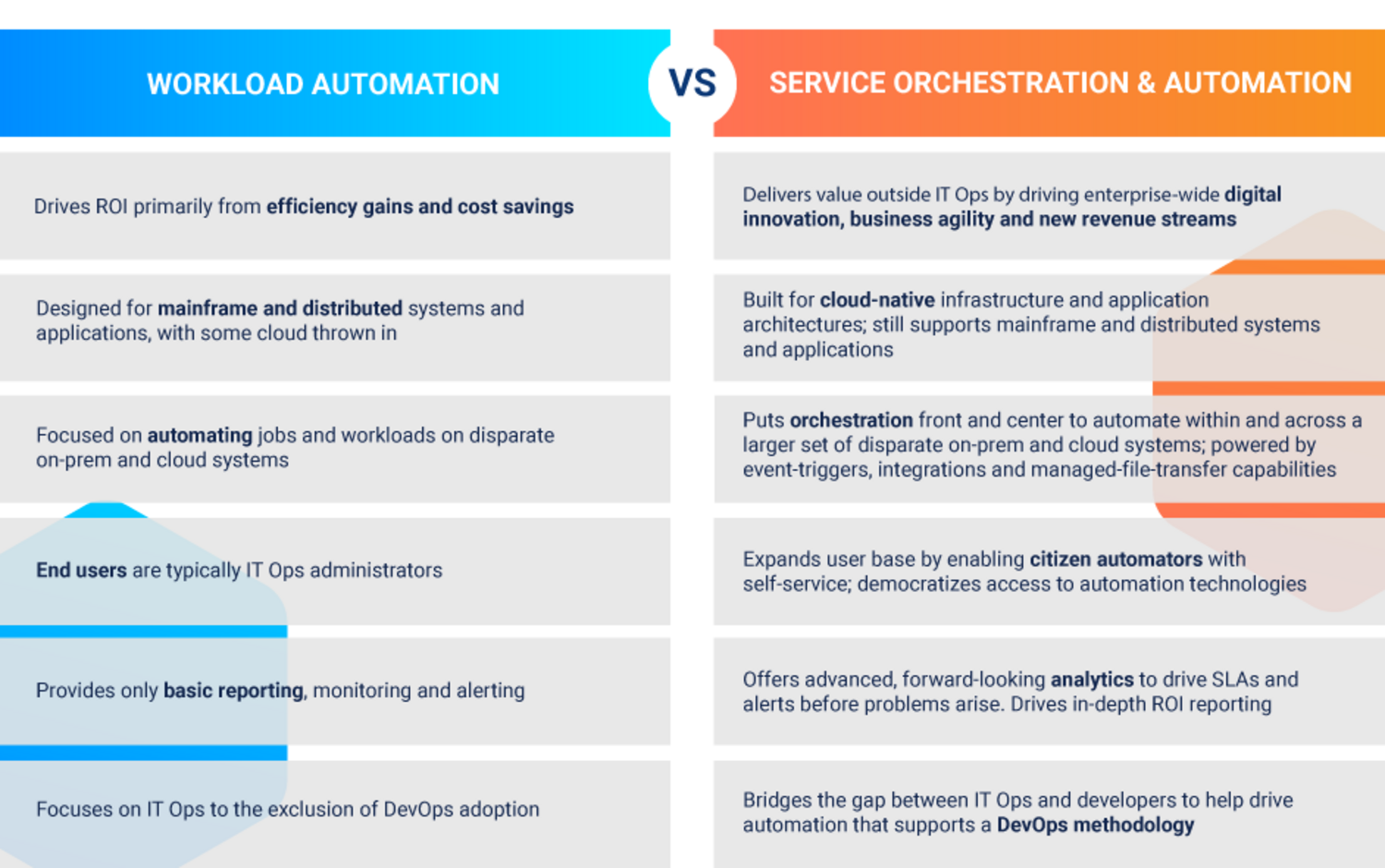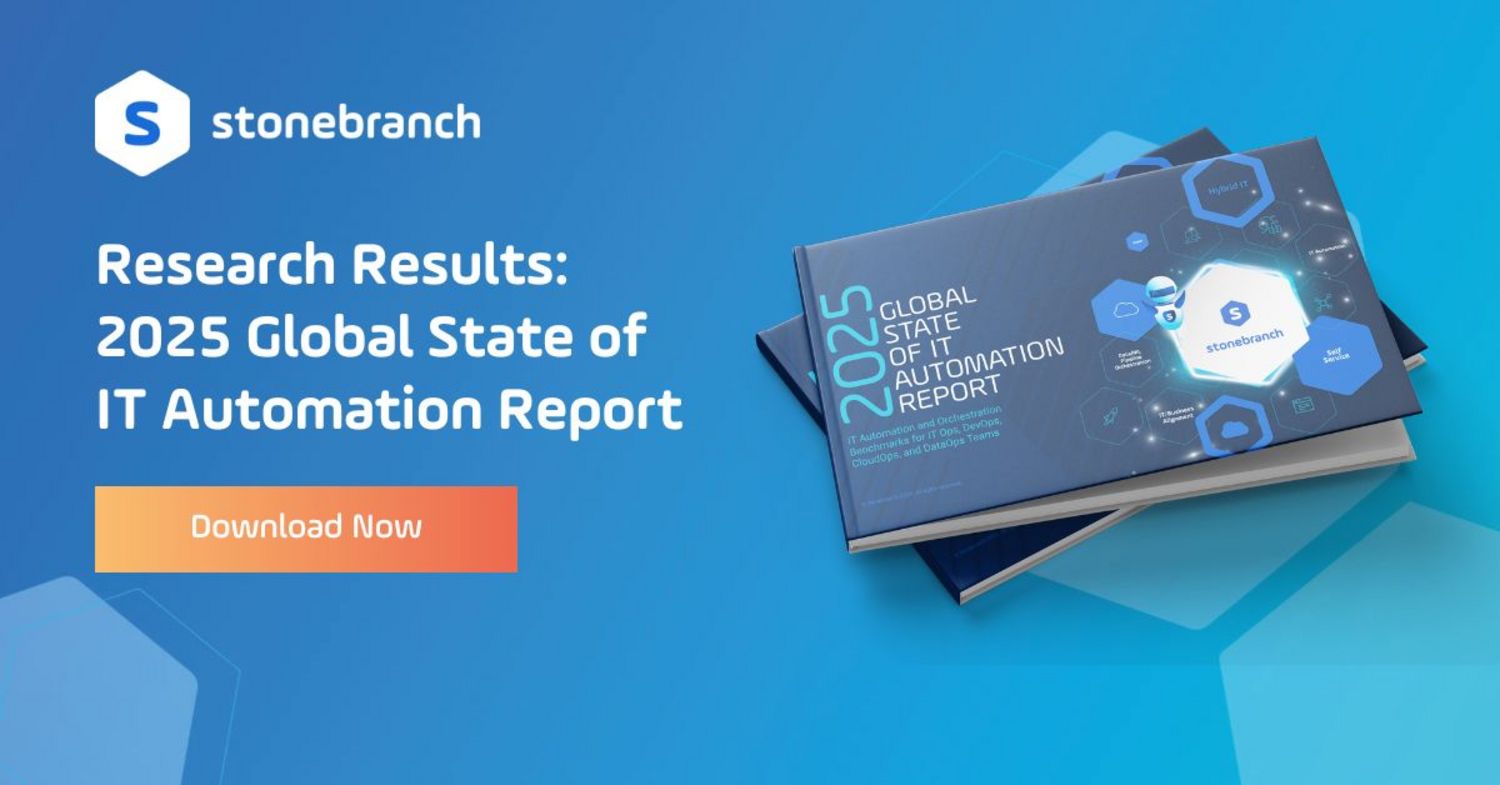Workload Orchestration vs Workload Automation — and Why it Matters
Workload automation is still a vital part of the IT ecosystem. However, workload orchestration elevates it by connecting hybrid IT environments, breaking down data silos, and enabling advanced ML operations.

Workload orchestration platforms have emerged as a critical evolution from traditional workload automation (WLA). While WLA has long been the backbone of mainframe and distributed scheduling, workload orchestration allows enterprises to automate across diverse, hybrid IT environments.
This transformation from simple job scheduling to comprehensive workload automation, and now to sophisticated workload orchestration, signifies a pivotal shift in how IT systems integrate and operate.
The Evolution from Workload Automation to Workload Orchestration
In the early days, job scheduling software was used to run batch workloads. Starting in the early 2000s, the focus was on workload automation (WLA), which is a method of scheduling groups of jobs and batch processes across disparate platforms on-premises. Today, we stand at the brink of another monumental shift as WLA tools transition into a software category that Gartner coined as service orchestration and automation platforms (SOAPs).
As this new category name implies, SOAPs orchestrate workloads while providing next-level automation capabilities in the cloud. But what sets workload orchestration tools within the product category of SOAPs apart from traditional workload automation tools? And why does this distinction matter?
Workload Orchestration vs. WLA Solutions: The Key Differences
- Elevating ROI Expectations: Traditional WLA software solutions were prized for their efficiency gains and cost savings. However, in today's dynamic IT landscape, where real-time processing and hybrid IT integration are paramount, these solutions fall short.
- Workload orchestration through SOAPs transcends these limitations by not only enhancing internal processes but also supporting two of the biggest enterprise priorities at most organizations today: driving customer-focused agility and enabling digital innovation.
- Transitioning to Cloud-Native and Hybrid IT Environments: As the digital ecosystem evolves, organizations are choosing flexible, integrated infrastructures that span on-prem and cloud systems. Legacy WLA tools, once the staple in a predominantly mainframe and distributed system environment, now struggle to adapt. SOAPs, with their inherent cloud-native compatibility, offer comprehensive orchestration capabilities that bridge various IT environments, making them the cornerstone of modern IT automation strategies.
- Combining Automation and Orchestration: Traditional WLA tools automate in silos, limiting the scope of automation to specific systems or platforms. SOAPs redefine this approach by placing orchestration at the forefront, enabling interconnected workflows across diverse IT environments. This not only enhances efficiency but also supports real-time automation and data processing across on-prem, cloud, and microservices architectures.
- Expanding Automation to a Broader User Base: Historically, workload automation solutions catered primarily to IT Ops administrators. SOAPs break this mold by democratizing automation, enabling users across various departments — from DevOps to business analysts — to engage with and benefit from deploying orchestration tools. This inclusive approach supports a broader shift towards citizen automation.
- Enhancing Visibility and Analytics: The limited reporting and monitoring capabilities of traditional WLA tools often hinder a comprehensive understanding of automation workflows. In contrast, SOAPs provide observability, advanced analytics, and visibility across all environments. IT Ops is empowered with the data necessary to make informed decisions, anticipate issues, and demonstrate tangible ROI to business stakeholders.
- Bridging IT Ops and DevOps: The divide between IT Operations and Development has long been a challenge in achieving seamless IT workflows. Workflow orchestrators offer a new way of working together, enabling a collaborative DevOps lifecycle that harmonizes the diverse toolsets and automation practices of both worlds.
- Increasing Infrastructure and Operations Adoption: Keeping pace with service requests to provision VMs, cloud services, and containers is a looming issue. Forward-thinking I&O teams quickly adopted orchestration solutions to deploy on-prem and cloud-based workloads. They are also likely to apply container orchestration to their infrastructure needs.
Embracing Workload Automation and Orchestration for the Future
As we look to the future, the distinction between traditional workload automation and orchestration through SOAPs becomes increasingly critical. Gartner predicts a clear trend: “By year-end 2025, 80% of organizations currently delivering workload automation will be using SOAPs to orchestrate workloads across IT and business domains.” This shift isn't merely about keeping up with technological advancements; it's about reimagining the potential of IT automation to drive unparalleled efficiency, innovation, and value across the enterprise.

With the profound evolutionary shift underway (as detailed above), the question now is why any organization would want to be in the 20% clinging to standalone WLA solutions.
In and of itself, the fact that service orchestration and automation platforms differ from workload automation solutions isn’t terribly important. What matters is that SOAPs retain all their high-value workload automation capabilities while building on them to offer a new kind of platform that meets the needs and challenges of complex hybrid IT and cloud-native environments.
In conclusion, the journey from WLA to SOAP reflects a broader evolution in IT automation — moving from efficiency and cost savings to enabling strategic, value-driven use cases. As SOAPs continue to redefine the landscape, organizations are poised to unlock new levels of agility, performance, and competitive advantage.
Start Your Automation Initiative Now
Schedule a Live Demo with a Stonebranch Solution Expert






